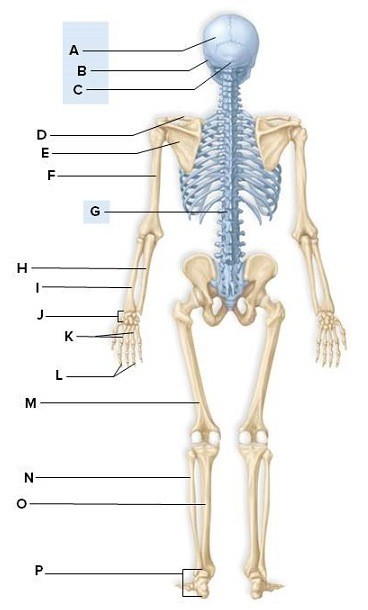Identify the labeled structures on the human skeleton in the picture.  A: ________B: ________C: ________D: ________E: ________F: ________G: ________H: ________I: ________J: ________K: ________L: ________M: ________N: ________O: ________P: ________
A: ________B: ________C: ________D: ________E: ________F: ________G: ________H: ________I: ________J: ________K: ________L: ________M: ________N: ________O: ________P: ________
What will be an ideal response?
A: parietal bone
B: temporal bone
C: occipital bone
D: clavicle
E: scapula
F: humerus
G: vertebral column
H: ulna
I: radius
J: carpals
K: metacarpals
L: phalanges
M: femur
N: fibula
O: tibia
P: tarsals
You might also like to view...
A photographic representation of the chromosomes of an organism is called a(n) _______
A. allele variation B. chromosomal spreading C. chromosome picture D. karyotype
Imagine that you have found a mutant oak plant that cannot produce fusiform initials. Which of the
following would be the most direct result of this mutation?
a. The plant would not be able to perform photosynthesis. b. The plant would not be able to make secondary xylem and phloem. c. The plant would not be able to make roots. d. The plant would not be able to transport sugar to the roots. e. The plant would not be able to make leaves.
Cells or cell parts that detect a stimulus are called
a. effectors. b. integrators. c. sensory receptors. d. regulators. e. detectors.
Nitrogenous waste products, such as urea and uric acid, are primarily formed because of the digestion of
A) lipids. B) carbohydrates. C) salts. D) proteins.